News
Governi e blockchain: amici, nemici o qualcosa nel mezzo?

IL Conferenza Blockchain di Londra 2024 ha riunito politici di entrambe le sponde dell’Atlantico nel suo panel sul ruolo dei governi nella promozione dell’innovazione. Il panel ha posto la domanda: una politica efficace e un intervento governativo possono fungere da catalizzatore per la crescita e il progresso sociale, o è opportuno affidare al mercato il compito di determinare il proprio destino?
Il panel è stato moderato da Dean Armstrong KC, dello studio londinese Maitland Chambers. La richiesta di Armstrong per un rapporto sulla situazione delle risorse digitali del governo del Regno Unito è venuta da lì Alun Cairnsdeputato conservatore e vicepresidente della British Blockchain Association.
Cairns ha affermato che c’è solo “un piccolo numero” di parlamentari che capiscono la blockchain, con la maggior parte del Parlamento che immediatamente identifica la blockchain con elementi meno gustosi come le criptovalute, il dark web e simili. Cairns l’ha definita “una sfida di comprensione” piuttosto che una questione di “branding”, ma ha sottolineato la “sfida collettiva” che la comunità blockchain deve affrontare per “differenziare le criptovalute dalla blockchain ed evidenziare cosa fa la blockchain per migliorare i risultati politici”.
Cairns vede il suo ruolo in questa sfida come quello di “concentrarsi su aree politiche distinte che possono essere trasformative”. Cairns ha citato il notoriamente “inefficiente, costoso, complicato e impreciso processo” di trasferimento dei terreni come “probabilmente il frutto più maturo da raccogliere”, in parte perché è gestito da un’agenzia primaria.
L’aggiunta della tecnologia blockchain al trasferimento di terreni “lo renderebbe senza dubbio molto più efficiente” prevenendo allo stesso tempo “così tante frodi e così tanti rischi”. L’aggiunta della blockchain a questo processo “potrebbe quasi essere implementata su base pilota o su base regionale. Ciò darebbe fiducia ai politici, ai regolatori e ai funzionari pubblici”, per non parlare degli utenti pubblici.
Cairns ha sottolineato che il settore deve concentrarsi su aree “dove la blockchain potrebbe fare la differenza e apportare cambiamenti in modo positivo, in modo che le persone possano capire cosa fa senza preoccuparsi della tecnologia che sta dietro”. Una volta superato l’ostacolo, “le opportunità sono illimitate”.
Avviso di fuoriuscita
Armstrong allora interrogò Tom SpillerDirettore legale presso lo studio legale Rosenblatt nel Regno Unito, che fornisce consulenza alle aziende blockchain su come farlo rimanere entro i limiti legali.
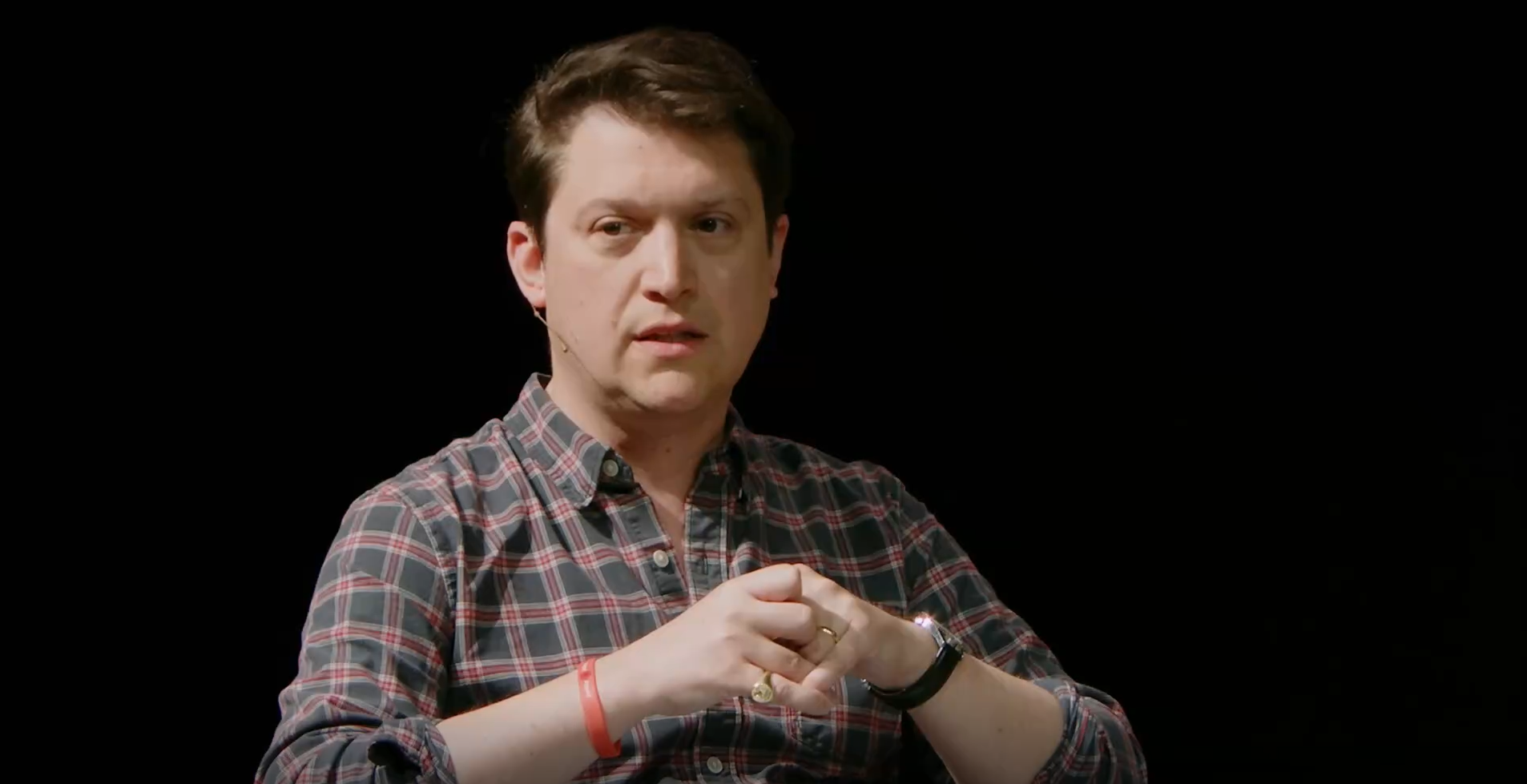

Spiller ha affermato che “il principale fattore di differenziazione” nelle opinioni sulla blockchain “probabilmente sarà la geografia”. Mentre individui in paesi come Argentina e Turchia potrebbero vedere le risorse digitali come “un mezzo per risolvere il fallimento del mercato o dello stato”, altri paesi vedono un canale di rimesse economicamente vantaggioso mentre altri ancora lo vedono puramente come uno sforzo speculativo.
E poi ci sono paesi che “semplicemente non lo vogliono”, come Cina e Nigeria. Spiller sostiene che i governi di questi paesi “singolarmente non riescono a capire che il motivo per cui la blockchain è popolare è a causa loro”. I governi di paesi come l’America hanno avuto in antipatia le risorse digitali perché le loro prime esperienze sono state “molto negative”, basate sui mercati del dark web come Via della Seta e la popolarità delle risorse digitali presso i regimi canaglia (Corea del nord) E terroristi.
Secondo Spiller l’approccio del Giappone è il più interessante. A partire da Monte Gox scandalo, in cui un gran numero di clienti giapponesi hanno perso un sacco di soldi, Spiller dice che sarebbe stato molto facile per il governo giapponese “abbassare le saracinesche e dire ‘no, lo vieteremo, la Tulip mania, la gente che si diverte soldi rubati da astuti venditori di olio di serpente.’”
Invece, il Giappone “si è impegnato con quella che considerava la parte sofisticata della propria industria nazionale, ha affermato che ci sarà un regime di licenze, e se alcuni di voi non saranno in grado di raggiungere gli standard sufficienti che richiediamo ai nostri cittadini, resterete senza lavoro. Allo stesso tempo, hanno fatto qualcosa di radicale, hanno riconosciuto soprattutto Bitcoin come moneta avente corso legale.” Questo approccio “radicale” del bastone e della carota ha “pagato loro i dividendi”.
Spiller ha contrapposto l’approccio del Giappone al disastro con quello della Corea del Sud, che sulla scia di molteplici scandali ha imposto un regime rigoroso che li ha visti passare da “un ecosistema in forte espansione di circa 50 scambi a cinque”. Spiller non ha risparmiato il suo mercato interno, sottolineando che un tempo il Regno Unito aveva “letteralmente centinaia di aziende attive in questo settore”, ma ora è sceso a poco più di 30 aziende.
Armstrong ha contrapposto questo approccio frammentato al modo in cui i governi di tutto il mondo hanno adottato un approccio più uniforme nei confronti delle tecnologie più recenti come intelligenza artificiale (AI). Spiller ha affermato che il problema della blockchain è che “esisteva in un vuoto totale, quindi i regolatori non dovevano interagire con essa finché non si presentava un problema”. Le diverse esperienze blockchain “sono nate in diversi contesti sociali e hanno portato a questa enorme varianza”.
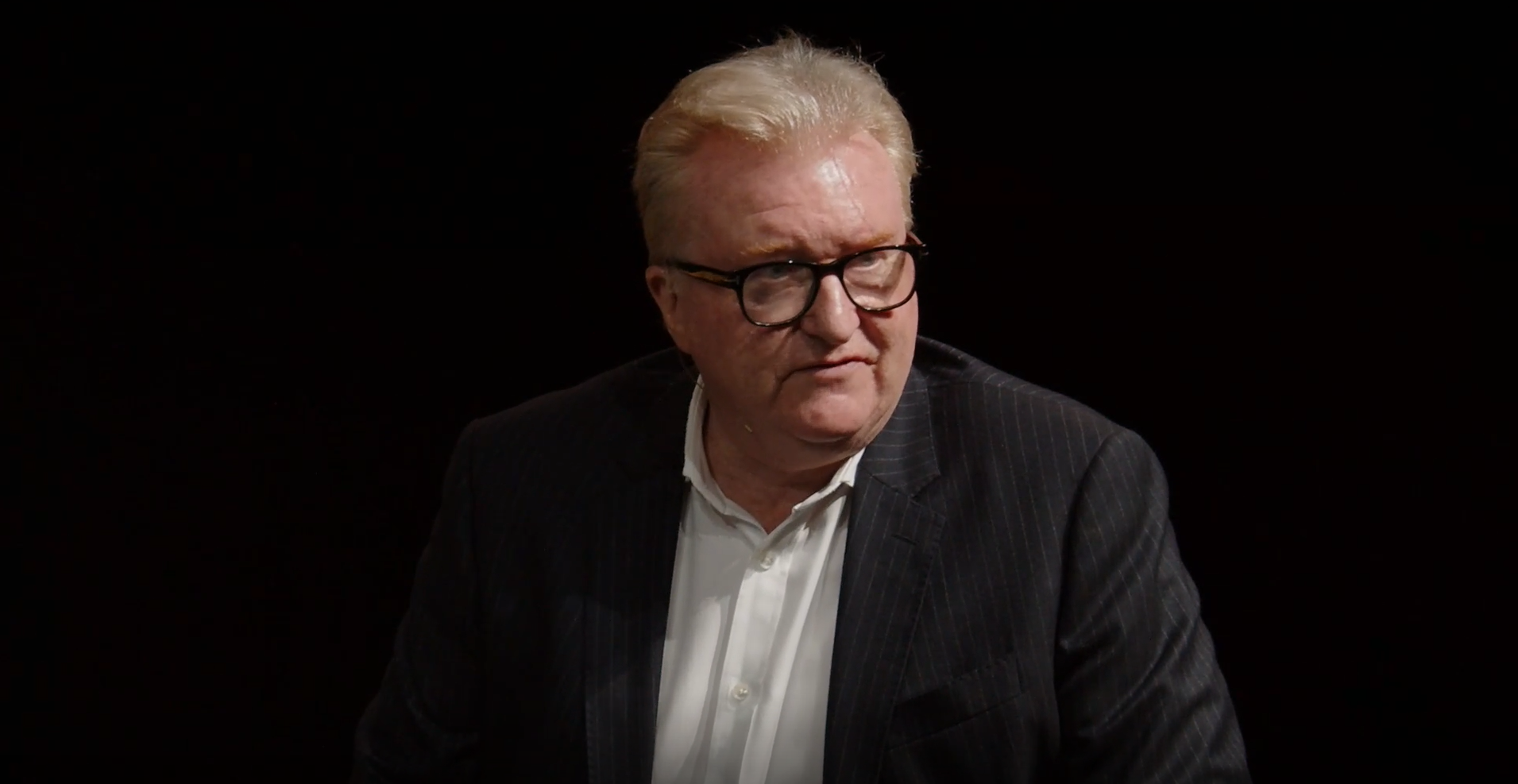

Prova, prova, ancora trilemma
Il prossimo è stato Elizaveta Palaznik, un consulente di regolamentazione finanziaria con sede a Bruxelles. Palaznik ha descritto quello che ha chiamato “il trilemma blockchain”, ovvero la necessità delle aziende di trovare un “punto debole” tra decentralizzazione, sicurezza e scalabilità. Ciò è stato difficile da raggiungere perché, ad esempio, le aziende che desiderano la scalabilità generalmente devono compromettere la loro attuale posizione sulla decentralizzazione.
Palaznik ha affermato che la sfida è particolarmente grave per le aziende più piccole, che potrebbero avere un unico individuo incaricato di garantire la conformità. Queste aziende le dicono che se hanno bisogno di “spendere tanti soldi quanto un gigante Binance, non sopravviveremo”. Dice alle aziende che i costi “dovrebbero essere proporzionati al loro rischio sistemico”, ma i pesciolini della blockchain dovrebbero comunque “dimostrare al regolatore che sei in buona fede” e almeno “avviare il processo di conformità”.
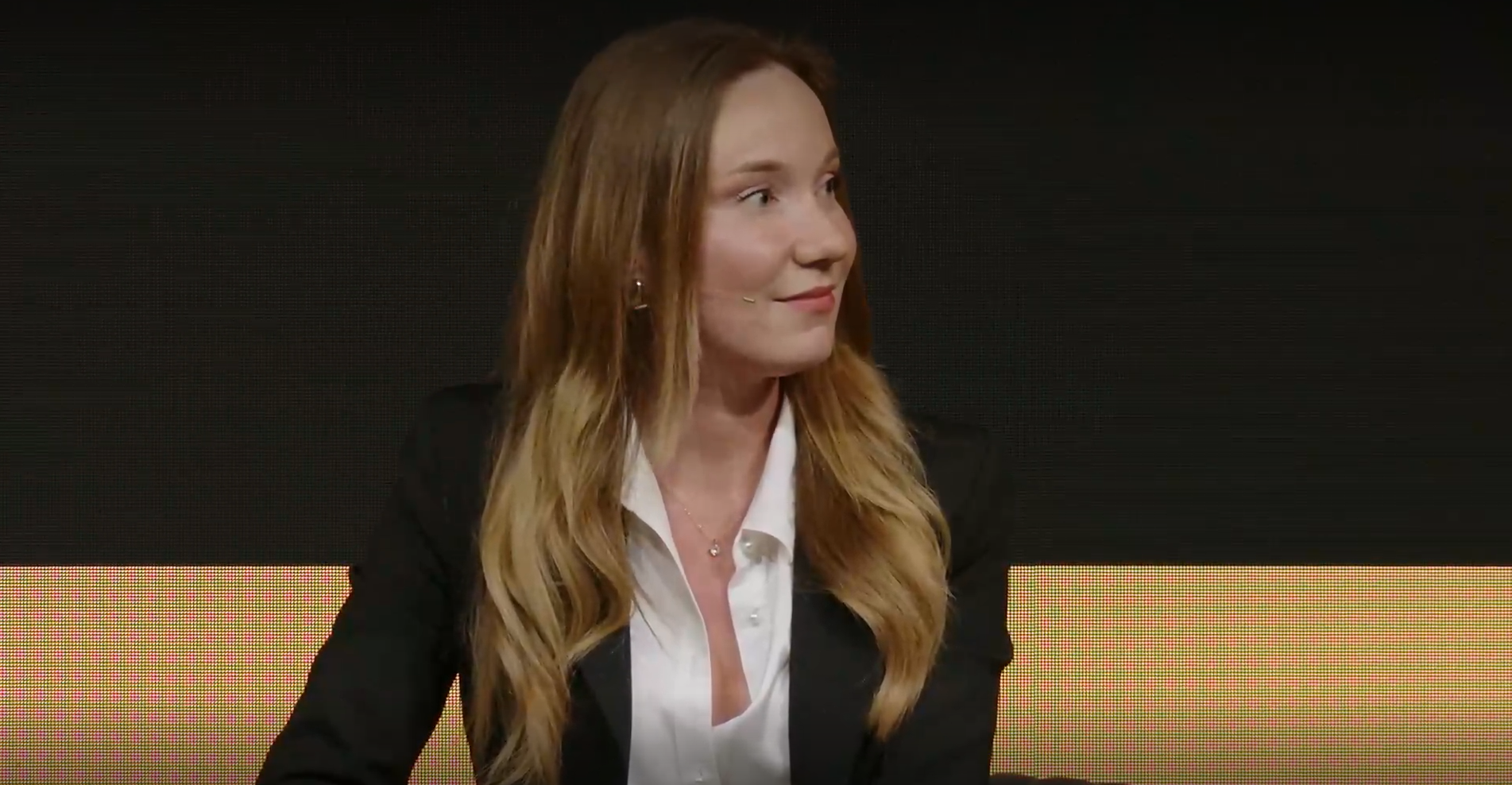

I regolatori si trovano ad affrontare il proprio trilemma; la necessità di “fermare i cattivi attori e proteggere i consumatori senza rallentare in qualche modo l’innovazione. Spesso si va a scapito degli altri”. Per trovare il proprio punto debole, i regolatori “devono essere informati su ciò che regolamentano”, altrimenti le aziende potrebbero trasferirsi in giurisdizioni che comprendono meglio il settore.
Palaznik ha fatto riferimento a quella dell’Unione Europea Mercati delle attività crittografiche (MiCA), il disposizioni sulle stablecoin di cui entreranno in vigore il 30 giugno, con il resto delle regole che entreranno in vigore il 30 dicembre. Palaznik ha detto di essere cautamente ottimista sul fatto che il mercato “procederà a ritmo sostenuto” sotto MiCA piuttosto che esserne ostacolato, ma si riserva di giudicare fino a quando i regolamenti non saranno stati approvati. in vigore da un anno.
Vuoi parlare di blockchain?
Il prossimo è stato Stefan Kromolickiconsulente del gruppo commerciale blockchain Apco nel mondo, che rappresenta 90 aziende in Europa e nel mondo. Kromolicki ha affermato che l’obiettivo di Apco è “creare un dialogo tra il mercato e coloro che creano la legge”, sottolineando che “per i governi, tutta questa roba è completamente nuova”.
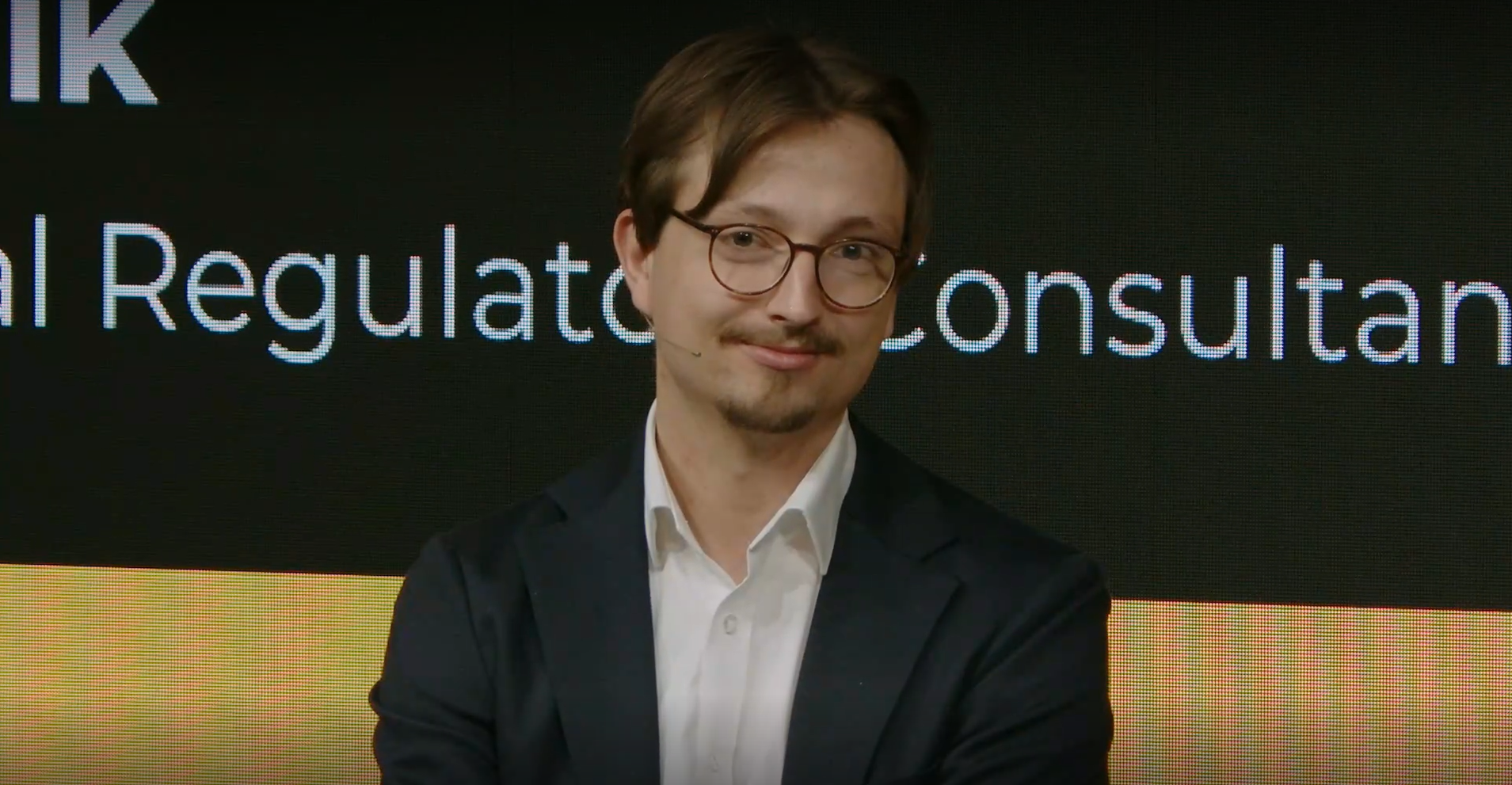

L’obiettivo di Kromolicki è quello di “garantire che il mercato sia coinvolto” nella creazione delle normative, auspicabilmente contribuendo in fase di stesura. “La nostra missione principale è combattere le idee sbagliate, sottolineare che quando FTX succede, non è perché è blockchain, ma perché la frode è un crimine.”
Armstrong ha osservato che la sfida che deve affrontare il settore delle risorse digitali è che “c’è così tanto gergo che gli estranei ritengono che sia tutto troppo complicato”. Kromolicki ha affermato che gruppi come Apco “cercano di tradurre le preoccupazioni – molto spesso a livello tecnico e concreto – ai politici”, mentre allo stesso tempo “traducono le preoccupazioni dei politici” al mercato. Gruppi come Apco offrono uno sportello unico a cui i politici possono accedere quando cercano di raccogliere cosa pensa il mercato complessivo di questa o quella proposta normativa.
Lasciamo correre l’innovazione!
Ultimo ma non meno importante è stato Hillary Schieve, il sindaco di Reno, Nevada. Eletta nel 2014, Schieve ha affermato che Reno all’epoca stava ancora lottando per emergere dalla recessione del 2008, spingendola a concludere che la città aveva bisogno di diversificare la propria economia lontano dai casinò e abbracciare il “rischio e l’innovazione” del settore tecnologico.


Il cambiamento di Schieve alla fine attirò aziende come Amazon, Tesla e altre a costruire localmente, mentre Schieve organizzò un’iniziativa token non fungibile (NFT) del Balena spaziale, un’installazione fisica originariamente creata per il festival Burning Man. Schieve ha definito l’NFT un modo per “altre persone di condividere l’arte della città”. Schieve ha anche messo le “proprietà storiche della città su blockchain in modo che non potessero essere manipolate” e ha iniziato a compilare rapporti del personale utilizzando l’intelligenza artificiale.
Schieve è anche l’attuale presidente della Conferenza dei sindaci degli Stati Uniti e vede parte del suo ruolo nel “presentare queste cose ad altri sindaci”. Il suo messaggio non è sempre ben accolto, ma un recente “caso di prova” coinvolge ChatGPT ha lasciato molti altri sindaci “a bocca aperta”. Schieve ha affermato che la retorica politica ha lasciato molti abituati a tali messaggi, ma il trucco era “andare là fuori ed essere autentici e onesti riguardo alle aspettative”.
Domande e risposte
La sezione di domande e risposte del panel è iniziata con Armstrong che chiedeva quanto spettasse ai governi promuovere l’innovazione. Cairns ha insistito sul fatto che dovesse trattarsi di una partnership, con il settore privato che presenta un piano e convince il governo che vale la pena andare avanti, mentre la responsabilità del governo è quella di creare la giusta regolamentazione. Cairns ha ribadito “la necessità di trovare aree distinte per creare fiducia”.
Kromolicki ha fatto eco a questo punto di vista, affermando che le aziende devono “mostrare quali problemi stiamo cercando di risolvere con la tecnologia piuttosto che mostrare come la tecnologia sia fantastica, interessante e così via”. I regolatori sono persone molto pragmatiche e quindi le aziende devono “mettere in primo piano questi casi d’uso”.
Schieve ha detto che non è un segreto che il governo sia “totalmente antiquato”, ma ha esortato il settore privato a contattarla riguardo alle “tue grandi idee” perché ci sono “cose che posso fare per promuovere la tua innovazione e aprire quelle porte”. Spiller ha commentato che gli piacerebbe “arrivare a Reno” per trarre vantaggio dall’approccio collaborativo di Schieve.
Un membro del pubblico ha chiesto a Cairns quale ruolo potrebbe svolgere la blockchain nel migliorare il servizio sanitario nazionale (NHS) del Regno Unito, portando Cairns a rivelare che diversi membri della famiglia lavoravano in qualche modo in campo medico, e tutti hanno parlato del “volume paralizzante di pratiche burocratiche che hanno”. devo fare.”
Cairns ha affermato che la combinazione di blockchain e intelligenza artificiale potrebbe “liberare [medical professionals] per ore di cure” ma il sistema sanitario nazionale “è quasi come una fede, quindi dobbiamo essere cauti nell’introdurre la blockchain perché dobbiamo avere fiducia” che non peggiorerà inavvertitamente le cose a breve termine. Ripetendo il suo consiglio di raccogliere frutti più a portata di mano – almeno per il momento – Cairns ha suggerito che “dobbiamo fare alcuni piccoli passi prima di arrivare a” risolvere i mali ben pubblicizzati del servizio sanitario nazionale.
Guarda: riepilogo del primo giorno della London Blockchain Conference 2024

 larghezza=”562″ altezza=”315″ frameborder=”0″allowfullscreen=”allowfullscreen”>
larghezza=”562″ altezza=”315″ frameborder=”0″allowfullscreen=”allowfullscreen”>
Momenti salienti del secondo giorno della London Blockchain Conference 2024

 larghezza=”562″ altezza=”315″ frameborder=”0″allowfullscreen=”allowfullscreen”>
larghezza=”562″ altezza=”315″ frameborder=”0″allowfullscreen=”allowfullscreen”>
Momenti salienti del terzo giorno della London Blockchain Conference 2024

 larghezza=”562″ altezza=”315″ frameborder=”0″allowfullscreen=”allowfullscreen”>
larghezza=”562″ altezza=”315″ frameborder=”0″allowfullscreen=”allowfullscreen”>
Nuovo nella blockchain? Dai un’occhiata a CoinGeek Blockchain per principianti sezione, la guida definitiva alle risorse per saperne di più sulla tecnologia blockchain.
News
Blockchain Technology Will Transform Water Access and Management Globally
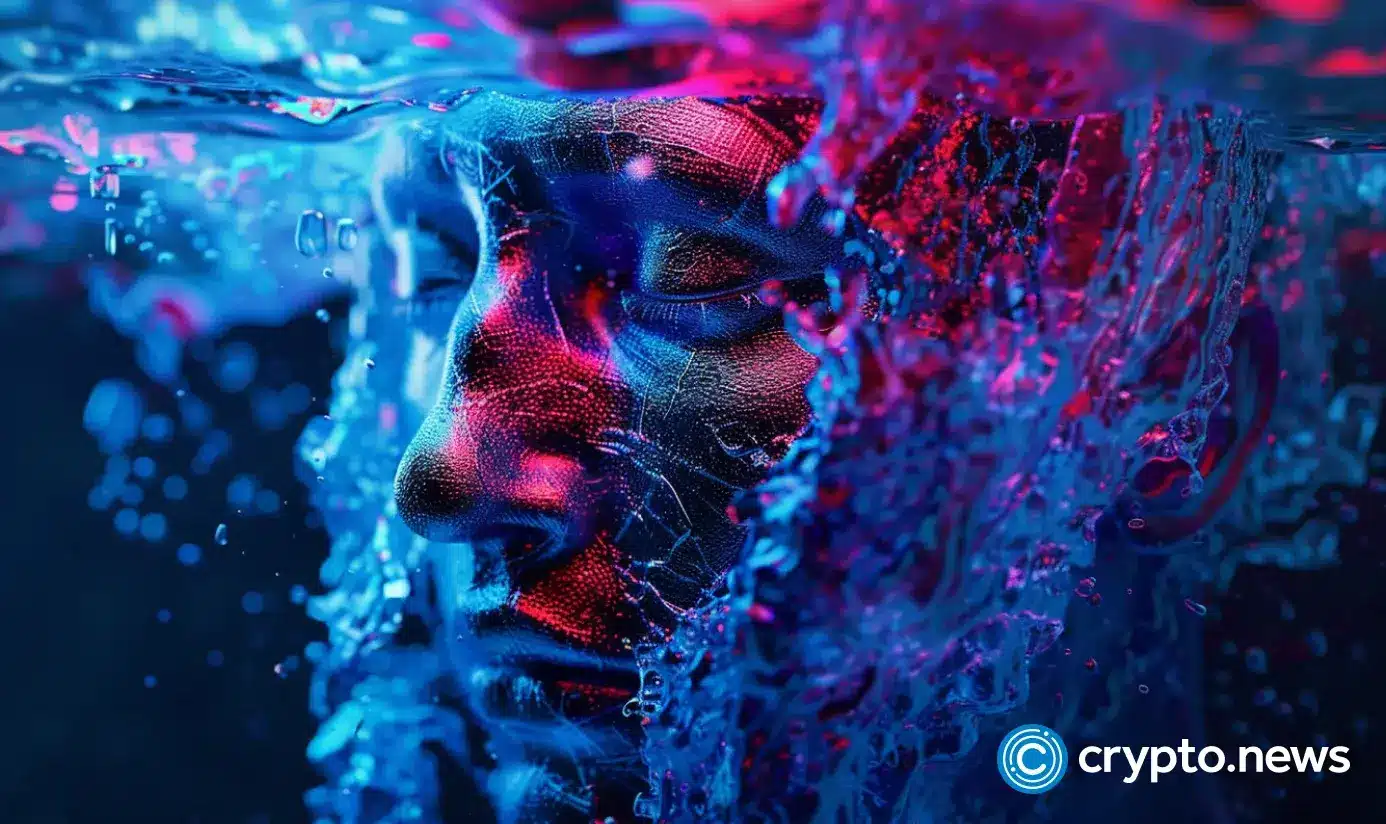
Disclosure: The views and opinions expressed here are solely those of the author and do not represent the views and opinions of the crypto.news editorial team.
Access to clean water is a basic human need, yet billions of people around the world still struggle to get it. According to the World Health Organization, over 2 billion people live in countries suffering from severe water stress, and this number is expected to continue to grow due to climate change and population growth.
Traditional water management systems have struggled to address these challenges, often hampered by inefficiencies, lack of transparency, and misallocation of resources. Blockchain technology offers a promising solution to these challenges, providing equitable access and sustainable use of this crucial resource.
The current state of water management
Water management today faces several pressing issues. Inefficiencies in water supply, distribution, and use, coupled with a lack of real-time monitoring, often result in resource waste and misallocation. Many water sources fail to realize their full potential due to infrastructure and financing shortfalls. For example, the Environmental Protection Agency (EPA) report indicated that the United States would need to invest $625 billion over the next 20 years to repair, maintain and improve the country’s drinking water infrastructure due to aging pipes and other infrastructure problems. Additionally, in the United States alone, household leaks can to waste nearly 900 billion gallons of water per year nationwide. This is equivalent to the annual domestic water consumption of nearly 11 million homes.
Furthermore, corruption and mismanagement of water resources can cause unequal distribution, with disadvantaged communities often bearing the brunt of water scarcity. For example, South Africa is struggling with myriad challenges to its water security: drought, inadequate water conservation measures, outdated infrastructure, and unequal access to water resources. The country faces significant water scarcity, with demand expected to outstrip supply by 2030, creating a projected gap of 17%.
Furthermore, the global water industry is highly monopolized, with a few key players controlling a significant share of the market. These companies exert substantial influence over the water supply chain, often prioritizing profit over equitable distribution and environmental responsibility. This concentration of power can lead to inflated prices and limited access for vulnerable populations. The global bottled water market alone is projected to reach $509.18 billion by 2030, with these large companies capturing a significant share of revenue. This monopolization exacerbates existing inequalities in water access and highlights the need for more decentralized and community-driven water management solutions.
Source: Grand View Search
The potential of blockchain in water management
Blockchain technology can address these issues by providing a transparent, secure, and decentralized platform for water resource management. This approach offers several advantages:
- Transparency and accountability. Blockchain’s immutable ledger ensures that all transactions and data entries are transparent and cannot be changed once recorded. This transparency can reduce corruption and ensure that water resources are allocated fairly and efficiently. For example, blockchain can be used to track water usage from source to end user, providing a clear record of how water is distributed and used. This level of transparency can help hold authorities accountable and manage water resources sustainably.
- Efficient resource management. Blockchain can facilitate the creation of smart contracts, which are self-executing contracts with the terms of the agreement written directly into the code. These contracts can automate water distribution based on real-time data, directing water to where it is needed most. For example, smart contracts could be used to manage urban water supply systems, automatically adjusting water distribution based on real-time consumption patterns and demand. This can help optimize water use, reduce waste, and ensure that households and businesses receive the right amount of water at the right time.
In Dubai, the Dubai Electricity and Water Authority (DEWA) has implemented a blockchain-based smart water network initiative as part of its broader smart city strategy. This project integrates blockchain technology with IoT sensors to monitor water usage in real time, manage distribution, and detect leaks. The decentralized ledger ensures data integrity and transparency, enabling more efficient water management and reduced waste. DEWA’s initiative aims to improve sustainability and resource management in the rapidly growing city, highlighting the potential of blockchain to support urban water management and conservation efforts.
Community participation and ownership
Through blockchain, individuals can directly control and monetize their access to water resources, eliminating the need for third-party intermediaries. This direct control model allows local communities to make collective and transparent decisions about their water use. By managing their water directly from the source, communities can tailor water management practices to their specific needs, promoting equitable distribution and encouraging a sense of accountability and stewardship.
Additionally, future models could allow people to monetize their access to water through web3 technologies. For example, a community-to-business (C2B) model could allow people to sell water directly to companies. In this model, people do not have to own the water directly, but can profit by staking their tokens during event sales pools. This approach not only supports sustainable water management, but also creates economic opportunities for community members. Additionally, a “Burn to Secure” protocol can be used to provide water allocation rights. This protocol provides a true sense of water security and financial opportunity by allowing people to redeem their rights. This system not only secures future water allocations, but also increases token scarcity and value.
Additionally, a pure sense of investment is achieved through investments in water sources. This leads to potential financial returns and dividends by addressing the inefficiencies in water supply mentioned above. By investing to finance infrastructure projects, such as building factories and improving distribution systems, more water can be brought to communities, creating additional economic opportunities.
Monetizing water access through the C2B model, the “Burn to Secure” protocol, and investments in water sources all generate economic benefits for the community, promoting a more equitable and efficient water management system.
Overcoming challenges
While blockchain technology has the potential to improve water management, there are challenges to its adoption. The complexity of blockchain systems and the need for technological infrastructure can be barriers, especially in developing regions. Additionally, there are concerns about the significant energy consumption of blockchain networks. However, technological advances and the development of more energy-efficient blockchain solutions are helping to alleviate these concerns. Additionally, education and capacity building are key to ensuring stakeholders understand how to effectively use blockchain technology. Governments, NGOs, and private sector partners need to work together to provide training and support to communities and water management authorities.
Blockchain technology offers a practical and effective means to improve water management. In addition to addressing inefficiencies, blockchain empowers communities, promotes sustainable practices, and opens up new economic opportunities through models like community-to-business (C2B). As we face the growing challenges of climate change and population growth, blockchain is not only an innovative solution, but represents a fundamental shift in the way we manage and value water resources. Adopting blockchain in water management is essential to creating a sustainable and equitable future by changing the way we interact with and protect our most vital resource.

Jean-Hugues Gavarini
Jean-Hugues Gavarini is the CEO and co-founder of LAKE (LAK3), a real-world asset company leveraging blockchain technology to decentralize access to the global water economy. LAKE aims to ensure access to clean water for all, protect water resources, and deliver water to those in need through innovative technologies. Jean-Hugues has a diverse career spanning the luxury, fashion, and footwear industries. His career path includes notable successes at Mellow Yellow, Cremieux, and Tod’s. Raised between Silicon Valley and the French Alps, Jean-Hugues has always been immersed in technology and freshwater resources. In 2018, Jean became the CEO of Lanikea Waters, a water solutions entity based in the French Alps. In 2019, the concept of LAKE was born, embodying his commitment to innovation and sustainability.
News
Blockchain and AI Expo 2024

With rapid advances in the world of AI and blockchain, there are opportunities to leverage the security and transparency features of blockchain to improve the reliability and trust of AI systems and data transactions.
Explore the synergy of these advanced technologies in virtual mode Blockchain and AI Expowhich takes place on October 31, 2024 TO 10:00 GMT.
The event features cutting-edge presentations led by leading experts in evolving fields. Presentations are set to explore opportunities and challenges in the fusion of blockchain and AI, real-world applications, ethics, innovations in environmental sustainability, and more!
Gain a comprehensive understanding of how these technologies can synergistically drive innovation, optimize operations, and promote strategic growth opportunities. Develop your knowledge to facilitate informed decision making and give your company a competitive edge in the growing technology landscape.
News
Nigeria Eyes National Blockchain Nigerium for Data Sovereignty

Nigeria is keeping an eye on a new native blockchain network to protect the country’s data sovereignty.
According to local media, a team from the University of Hertfordshire has proposed the new blockchain, Nigeriato the National Information Technology Development Agency (NITDA).
Chanu Kuppuswamy, who leads the team, argued that relying on blockchain networks whose developers are located in other regions poses national security risks to the Nigerian government. He further said that Nigerium would allow the West African nation to customize the network to meet specific needs, while also promoting data sovereignty.
In his presentation, Chanu cited the recent migration of Ethereum to test of participation (PoS) consensus as an instance in which no Nigerians were involved but whose impact is far-reaching.
“Developing an indigenous blockchain like Nigerium is a significant step towards achieving data sovereignty and promoting trust in digital transactions in Nigeria,” he said.
While receiving the proposals in Abuja, NITDA’s Kashifu Abdullahi acknowledged the benefits a local blockchain would bring to Nigeria, including increased security of citizens’ data.
However, a NITDA spokesperson later clarified that Nigerium is still at the proposal stage and that the government has not yet decided whether to proceed or not.
“The committee is still discussing the possibility with stakeholders. Even if a decision is finally made, there is no guarantee that the name will be Nigerium,” the spokesperson told the media.
Nigerium’s reception in the country has been mixed. Some, like financial analyst Olumide Adesina, To say the network is “dead on arrival”. He believes the Nigerian government’s poor record in following through on its big technology plans will claim another victim. He pointed to the eNaira as a missed opportunity whose chances of success were much higher than those of Nigerium.
Others welcomed the proposal. Chimezie Chuta, who chairs the renewed The Nigerian Blockchain Policy Committee is “extremely optimistic“that Nigerium will be more successful than eNaira.
Speaking to a local news agency, Chuta stressed that eNaira failed because the central bank initiated the project on its own, without involving any stakeholders.
“They just cooked it and expected everyone to like it. [With Nigerium]there will be a lot of collaboration,” he said.
Registration of property title, digital identity and Certificate Verification are among the use cases that Nigerium is expected to initially target. However, Nigeria has already made progress in some of these fields through public blockchains.
SPPG, a leading school in governance and politics, announced in May the country’s first blockchain certificate verification system. Built on the The BSV BlockchainIt was developed in collaboration with the blockchain data recording company VX Technologies and local lender Sterling Bank.
Watch: The Future Has Already Arrived in Nigeria
 Italian: https://www.youtube.com/watch?v=M40GXUUauLU width=”560″ height=”315″ frameborder=”0″ allowfullscreen=”allowfullscreen”>
Italian: https://www.youtube.com/watch?v=M40GXUUauLU width=”560″ height=”315″ frameborder=”0″ allowfullscreen=”allowfullscreen”>
New to blockchain? Check out CoinGeek Blockchain for Beginners section, the definitive guide to learn more about blockchain technology.
News
Cambodian CBDC Developer to Build Palau Bond Market on Blockchain: Report

A Japanese fintech developer will build a blockchain-based bond market gateway for Palau, aiming to launch a trial in 2024 and a full launch the following year.
Japanese fintech developer Suramitsubest known for developing a central bank digital currency (CBDC) for Cambodia, is intended to build a Blockchain-gateway to the bond market based on the Pacific island nation of Palau, Nikkei He learned.
Soramitsu won the contract and plans to introduce the market on a trial basis in fiscal 2024, with a full launch scheduled for the following year, allowing the Palauan government to issue bonds to individual investors and efficiently manage principal and interest payments, according to the report.
The total cost of the project is estimated at several hundred million yen ($1.2 million to $5.6 million), less than half the cost of a non-blockchain alternative, people familiar with the matter said. The project has reportedly received support from Japan’s Ministry of Economy, Trade and Industry, with Japan’s foreign and finance ministries providing strategic and management advice on the project.
Soramitsu’s successful development of Cambodia’s CBDC in 2020 has boosted its reputation, with the digital currency’s popularity soaring, with over 10 million accounts opened by December 2023, representing 60% of Cambodia’s population. Following this, Cambodia’s central bank governor Chea Serey indicated intends to expand the reach of its CBDC internationally, particularly through collaboration with UnionPay International, the Chinese card payment service, and other global partners.
While Soramitsu’s work in Cambodia has been well received, the long-term popularity of CBDCs remains to be seen. As of late June, crypto.news reported a sharp drop in activity in India’s digital currency, the e-rupee, after local banks stopped artificially inflating its values.
According to people familiar with the matter, the Reserve Bank of India managed to hit the 1 million retail transaction milestone last December only after the metrics were artificially infiltrated by local banks, which offered incentives to retail users and paid a portion of the bank’s employees’ salaries using the digital currency.
-

 News1 year ago
News1 year ago“Captain Tsubasa – RIVALS” launches on Oasys Blockchain
-

 Ethereum1 year ago
Ethereum1 year agoComment deux frères auraient dérobé 25 millions de dollars lors d’un braquage d’Ethereum de 12 secondes • The Register
-

 News1 year ago
News1 year agoSolana ranks the fastest blockchain in the world, surpassing Ethereum, Polygon ⋆ ZyCrypto
-

 Videos1 year ago
Videos1 year agoHistoric steps for US cryptocurrencies! With a shocking majority vote!🚨
-

 Videos1 year ago
Videos1 year agoIs Emorya the next gem💎 of this Bitcoin bull run?
-

 News1 year ago
News1 year agoSolana Surpasses Ethereum and Polygon as the Fastest Blockchain ⋆ ZyCrypto
-

 Videos1 year ago
Videos1 year agoNexus Chain – Ethereum L2 with the GREATEST Potential?
-

 News1 year ago
News1 year agoFnality, HQLAᵡ aims to launch blockchain intraday repositories this year – Ledger Insights
-

 Ethereum1 year ago
Ethereum1 year agoScaling Ethereum with L2s damaged its Tokenomics. Is it possible to repair it?
-

 Regulation1 year ago
Regulation1 year agoFinancial Intelligence Unit imposes ₹18.82 crore fine on cryptocurrency exchange Binance for violating anti-money laundering norms
-

 Bitcoin1 year ago
Bitcoin1 year agoBitcoin Drops to $60K, Threatening to Derail Prices of Ether, Solana, XRP, Dogecoin, and Shiba Inu ⋆ ZyCrypto
-

 News1 year ago
News1 year agoSendBlocks Debuts with Major Support to Improve Blockchain Data Management










